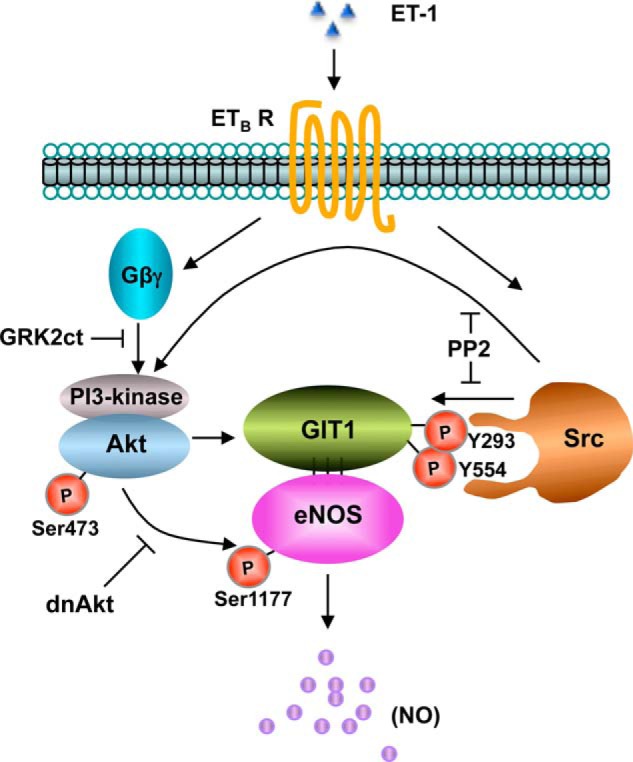FIGURE 8.

A proposed model for GIT1/eNOS signaling in sinusoidal endothelial cells. In sinusoidal endothelial cells, ET-1 activates its cognate G-protein-coupled receptor (ETB receptor (ETB R) and causes Gα and Gβγ activation and dissociation (see also Ref. 32). The mechanism of Src activation is currently unknown but may occur through ETB receptor-mediated β-arrestin recruitment of Src (54). Activated Src phosphorylates GIT1 at Tyr293 and Tyr554 and perhaps also eNOS at Tyr83 to partially activate it (41, 42). Phosphorylated GIT1 then associates with eNOS to facilitate its activating phosphorylation at Ser1177 by Akt. Receptor-activated Gβγ simultaneously stimulates Akt (at Ser473) activation through phosphatidylinositol (PI) 3-kinase (32), and this activation may be amplified by other signaling pathways (55). Thus, both Src and Akt kinases are crucial in the resultant phosphorylation-enhanced association of GIT1 and eNOS and in stimulating eNOS activity and NO production. dnAkt, dominant negative Akt.
